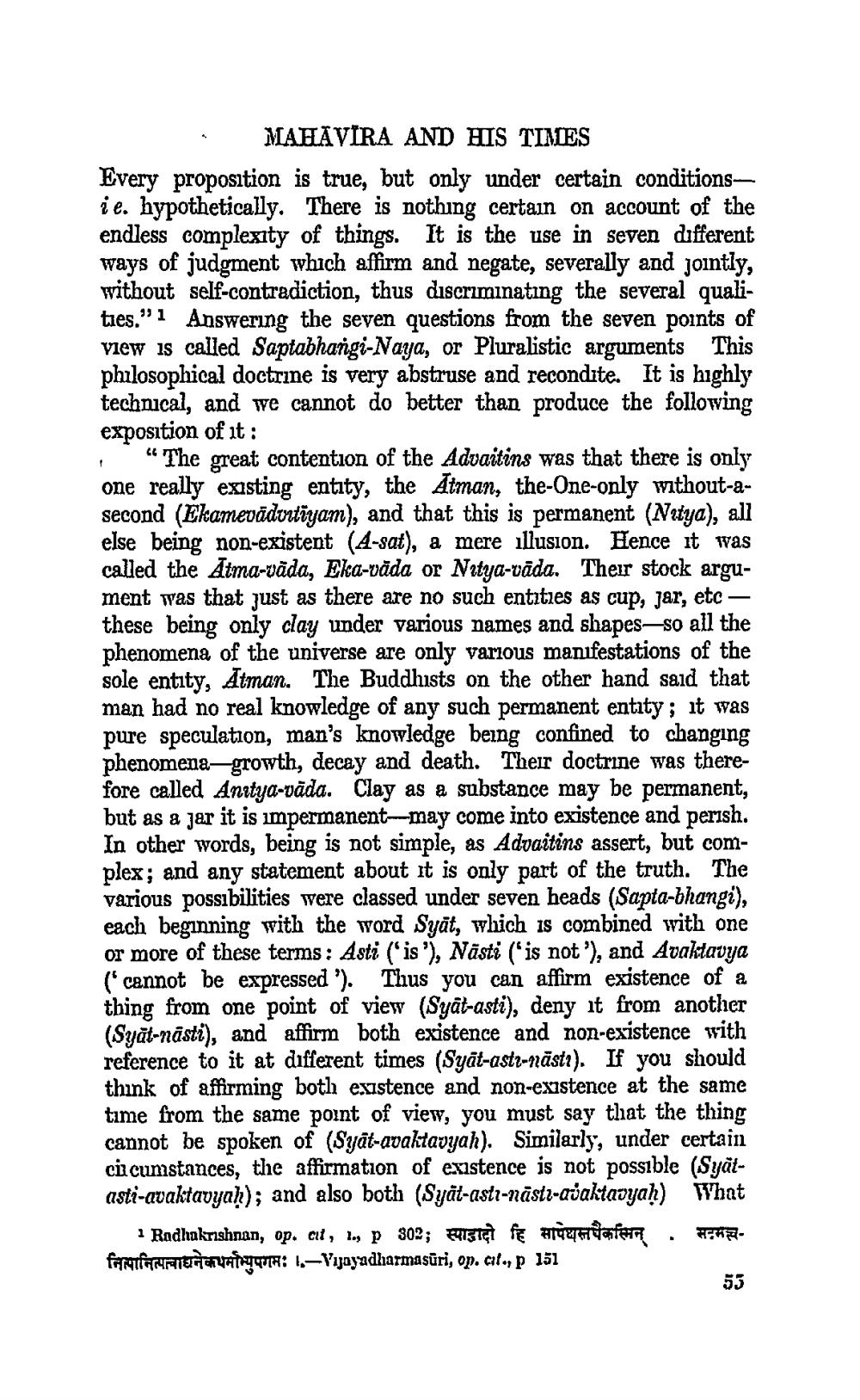________________ MAHAVIRA AND HIS TIMES Every proposition is true, but only under certain conditionsi e. hypothetically. There is nothing certain on account of the endless complexity of things. It is the use in seven different ways of judgment which affirm and negate, severally and jointly, without self-contradiction, thus discriminating the several qualities." 1 Answering the seven questions from the seven points of VIEW is called Saptabhangi-Naya, or Pluralistic arguments This philosophical doctrine is very abstruse and recondite. It is highly technical, and we cannot do better than produce the following exposition of it: "The great contention of the Advaitins was that there is only one really existing entity, the Atman, the-One-only without-asecond (Ekamevadustiyam), and that this is permanent (Naya), all else being non-existent (4-sat), a mere illusion. Hence it was called the Atma-vada, Eka-vada or Natya-vada. Their stock argument was that just as there are no such entities as cup, jar, etc - these being only clay under various names and shapes-so all the phenomena of the universe are only various manifestations of the sole entity, Atman. The Buddhists on the other hand said that man had no real knowledge of any such permanent entity; it was pure speculation, man's knowledge being confined to changing phenomena-growth, decay and death. Their doctrine was therefore called Anitya-vada. Clay as a substance may be permanent, but as a jar it is impermanent-may come into existence and perish. In other words, being is not simple, as Advaitins assert, but complex; and any statement about it is only part of the truth. The various possibilities were classed under seven heads (Sapta-bhangi), each beginning with the word Syat, which is combined with one or more of these terms: Asti (is), Nasti ('is not '), and Avaktavya ("cannot be expressed '). Thus you can affirm existence of a thing from one point of view (Syat-asti), deny it from another (Syat-nasta), and affirm both existence and non-existence with reference to it at different times (Syat-ast2-nasti). If you should think of affirming both existence and non-existence at the same time from the same point of view, you must say that the thing cannot be spoken of (Syat-avaktavyah). Similarly, under certain circumstances, the affirmation of existence is not possible (Syatasti-avaktavyal); and also both (Syal-asti-nasti-ajaktadyah) What Radhakrishnan, op. at, l., P802; RISTER FE ATU A . FARETA M ATTA: 1-Vijayadharmasuri, op. cit., p 151




